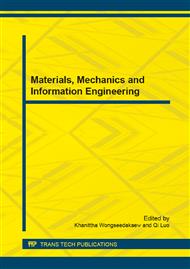p.195
p.199
p.208
p.213
p.220
p.224
p.228
p.234
p.240
The Research of Improved Abnormal ECG Cluster Analysis Algorithm
Abstract:
In order to solve the problem of ECG being complex, and the problem of abnormal ECG signal analysis standards being not uniform, this paper analyzes Lin Zetao’s clustering algorithm research achievements in the classification of abnormal heart rate. According to the characteristics of the clustering algorithm which is suitable for dealing with the rare data and the large amounts of data, this paper makes the analysis of the method of setting parameters in key process of the application of the clustering algorithm. This paper proposes an accurate clustering algorithm (LCFCM) about abnormal ECG which combines logical judgment, cluster analysis and fuzzy clustering together. Based on the algorithm design requirements, this algorithm perfects the logical judgment criteria and the key technologies of the ECG waveform vector extraction method. Ultimately, the MIT-BIH database is used as the sample to make experiment. The experiment shows that, this paper proposes LCFCM algorithm, whose accurate rate toward the classification of the abnormal heart rate reaches 93%. And at the same time, the good self-adaptive algorithm on different individuals ECG, has good practical value.
Info:
Periodical:
Pages:
240-248
Citation:
Online since:
January 2015
Authors:
Keywords:
Price:
Сopyright:
© 2015 Trans Tech Publications Ltd. All Rights Reserved
Share:
Citation:


